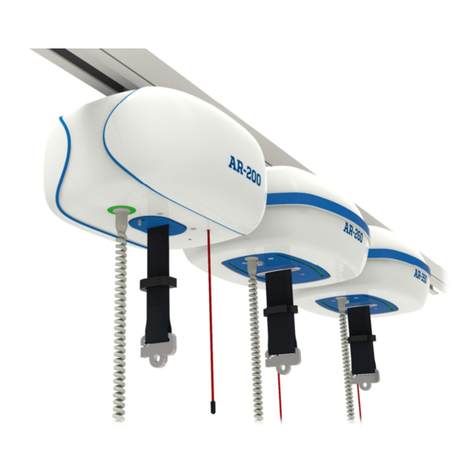
1General
1.4 Operators Responsibility Access™ EA & Access™ EAB
The operator is individually responsible for the safe use and maintenance of the lift.
They are also responsible for the lift users and their own personal safety and in the event
of an accident they will be prosecuted to the full extent of the law if they are deemed
negligent.
Legal action will also be taken if any unauthorised modications are made to the lift
without direct prior written authority by a PLS director.
The lift owner is the person who purchases the product, uses or oversees the
use of the lift, this person is legally responsible for the lift’s safe use.
The accompanying person, also known as the operator is responsible for the
safe operation of the lift.
The operator must be full trained in all the operation aspects of the lift such as the transportation
of people with motor deciencies or disabilities. The operator must exhibit the following
characteristics/ attributes for them to safely operate the lift:
PHYSICAL – Possess the required physical qualities/ characteristics sufciently to ensure
safe operation of lift in a safe and controlled manner. Examples include:
• Good hearing & sight
• Physically capable of performing all operational functions of lift
• Not impaired by the consumption of legal and/or illegal substances (such as alcohol
and/ or drugs)
MENTAL - Possess the required mental qualities / characteristics sufciently to ensure safe
operation of lift in a safe and controlled manner. Examples include:
• Understanding & application of the safety rules and procedures while operating the lift.
• Be constantly aware and pro-active to ensure the safety of operator, consumer and
nearby people.
• Have the knowledge/ skills to perform as an assistant and/ or operator in all aspects of
lift operation. E.g. the safe transportation, loading and unloading of disabled and other
passengers.
EMOTIONAL - Possess the required emotional qualities/ characteristics sufciently to
ensure safe operation of lift in a safe and controlled manner. Examples include:
• Work in a calm & safe manner while under stress so to prevent stress from impairing
good judgement.
• To be emotionally stable during normal or abnormal situations
TRAINING – Possess the required training qualities sufciently to ensure safe operation of
lift in a safe and controlled manner. Examples include:
• Completed operational training supervised by an experienced operator in PLS lifts in an
environment which is safe and controlled. Such supervised training should allow
the trainee to gain working experience in all operation aspects of the lift.






























